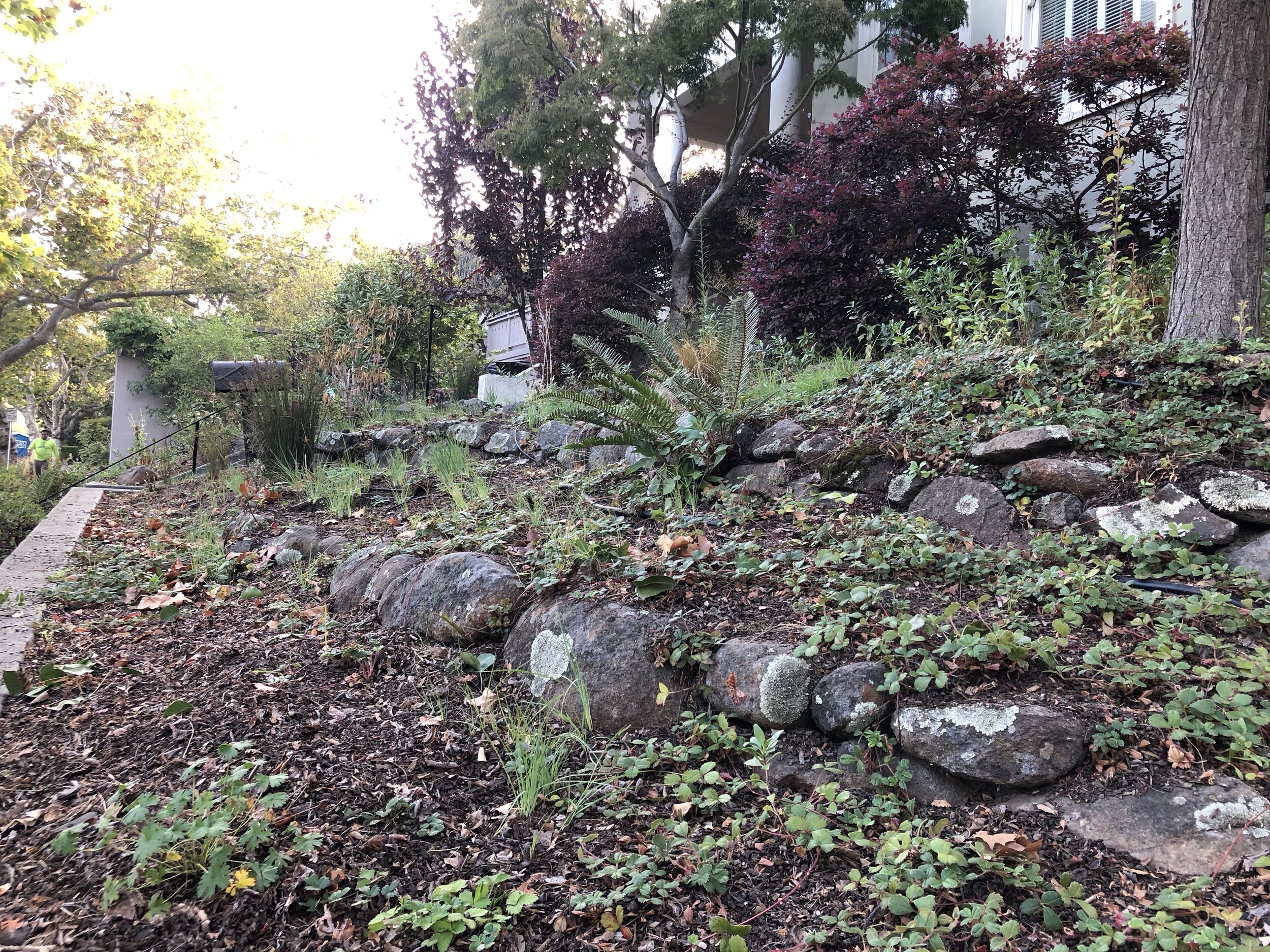Piedmont Connect Promotes Sustainable Landscapes
Piedmont Connect’s Healthy Landscapes Committee works to educate Piedmont residents, promote City sustainable landscaping programs, and supplement the capacity of City staff to achieve these common objectives:
Conserve scarce potable water supplies
Minimize local watershed toxins and pollutants
Support restoration of California’s faunal biodiversity by increasing the use of native California flora
Reduce stormwater runoff
Expand biological carbon sequestration capacity
Prevent soil erosion
Improve soil quality
Reduce wildfire susceptibility and minimizing potential loss
Native California sunflowers, Helianthus annuus, in a Piedmont hillside garden.
Conserve Potable Water, Manage Rainwater
Reduce conventional lawn size or convert to a native grass meadow (augmented with native wildflowers, as desired)
Install a residential graywater system for bathroom sink/shower/tub and laundry wastewater
Reduce square footage of impermeable surfaces (driveways, walkways, courtyards, patios)
Install rainwater storage to utilize rainwater runoff from roofs in the dry season or redirect downspout water to a bioswale or rain garden to filter toxins and replenish local groundwater
See Alameda Countywide Clean Water Program for more ideas and information
Foster California’s Biodiversity
Choose plants and trees endemic to San Francisco’s Inner East Bay Area
Patronize local Plant Nurseries who specialize in native California flora. Utilizing California plants native to our local ecosystems for at least 70% of our sub/urban landscaping is critical to improving the health of, and restoring balance to our everyday surroundings— sustaining local food webs and preserving watersheds.
Request a native Californian tree for your City parking strip to improve your home’s curb appeal
Preserve plant duff (fallen leaves, twigs, etc.) to provide natural mulch, supply plant nutrients and house wildlife
Remove invasive plants which can smother and kill native plants, trees and have detrimental effects on our local foodweb and disrupt healthy ecosystem functioning
Purchase plants from reputable specialty native-plant nurseries that do not buy from growers who pre-treat seeds or spray plants with neonicotinoids and systemic pesticides or fungicides that are harmful to pollinators.
Minimize Artificial Nutrients and the ‘Cides
Avoid chemical fertilizers which pollute our local watershed and endanger aquatic lifeforms.
Steer clear of the ‘cides: pesticides, herbicides, and fungicides. Some may endanger pets, human health, and local pollinator populations of all kinds (birds, native bees, honeybees, insects, and lepidoptera— butterflies and moths).
Piedmont Parks Department all but eliminated its use of pesticides in 2010 and adopted Integrated Pest Management techniques— a scientifically-recommended methodology which uses physical and biological means preferentially to control damage without resorting to chemicals. See UC Davis’ Integrated Pest Management Program for more info.
Increase Fire Preparedness and Resiliency
Review your home owner’s or renter’s insurance
Keep emergency supplies and evacuation kits filled and updated
Remove fire fuel from the home’s immediate perimeter (e.g. bushy, woody, and flammable vegetation growing against or right next to building— particularly oily and resinous vegetation like rosemary and chamise
Plant fire-resistant native plants and keep them hydrated by watering twice a month




